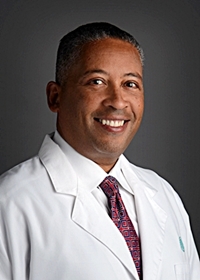A total solar eclipse will crisscross the country on Monday, Aug. 21, and it’s already become the most anticipated celestial event of the year.
So what makes this cosmic occurrence so special? WBTV meteorologist Eric Thomas explains.
“The key here is “total” solar eclipse. While they aren’t all that rare from a global standpoint (one or two occur every year), they are very rare in any one region on earth.
“The solar eclipse occurs as the moon travels between the sun and the earth and casts its shadow on earth. But if you look carefully, the moon’s shadow shows up as just a tiny dot on earth – it covers less than 1 percent. The chance of that dot passing anywhere close to your location is slim.
“As an example, the next solar eclipse that will even nip the Carolinas will be on the South Carolina coast in 2062. For North Carolina, you’ll be waiting until 2078! The average length of time between eclipses hitting the exact same spot on earth is 375 years. Wow!”

 Viewers will want to be sure to take precautions when viewing the eclipse. Galen Grayson, MD, an ophthalmologist with Carolinas HealthCare System Ophthalmology Care, answered some of the most asked-about questions regarding the eclipse and what viewers can do to make sure they’re prepared.
Viewers will want to be sure to take precautions when viewing the eclipse. Galen Grayson, MD, an ophthalmologist with Carolinas HealthCare System Ophthalmology Care, answered some of the most asked-about questions regarding the eclipse and what viewers can do to make sure they’re prepared. Question: When buying glasses to watch the eclipse, what should I be asking for or looking for in regard to safety? I’ve heard the mention of “shade 12” or higher. What does that mean and how can I know if my glasses meet this level or protection?
Answer: Solar filters have a shade number similar to the sun protective factor (SPF) used for sunscreen lotions. A minimum number of 12 is required to safely view any phase of a partial eclipse. Be sure to read the glasses/viewers warnings as some allow for viewing only at three-minute intervals versus others that allow prolonged viewing. It is important that glasses/viewers meet the International Organization of Standardization (ISO) safety standards. Homemade or ordinary sunglasses are not safe for looking at the sun and transmit thousands of times too much sunlight, which can result in direct damage to the light sensitive retina at the back of the eye. Be aware that scratched, damaged or poorly fitting solar filters are unsafe to use.
Also, beware of scandals involving companies or individuals selling fake solar eyewear. Remember, only the total phase of a solar eclipse can be safely observed without any solar filters and you will only experience a total eclipse if you are on a very specific trajectory line as the eclipse occurs. The American Astrological Society also has a list of reputable vendors of solar filters.
Q: If the sky is overcast during partial and totality of the eclipse, is it safe to watch without viewers?
A: Extreme overcast will not provide ideal conditions for eclipse viewing. Variable clouds can allow sudden exposure to intense light as clouds pass. The best rule to follow is that it is never safe to look directly at the uneclipsed sun or a partial solar eclipse. Even if 99 percent of the sun's surface is obscured during the partial faces of a solar eclipse, the remaining crescent sun is still intense enough to cause a retinal photochemical injury.
Although the amount of high-intensity, visible light is reduced on overcast or cloudy days, infrared and ultraviolet radiation still penetrate and can have long term adverse effects on the eyes. Intense visible light causes damage to the light-sensitive rod and cone cells in the back of the eye (retina) causing complex chemical reactions which can destroy them and result in either temporary or permanent vision loss.
Remember, if you can see the sun then the sun can see you! Always view an eclipse safely.
Q: I’ve heard people mention “pinhole projectors.” What are these and are they safe for my eyes?
A: Pinhole projection is simply passing sunlight through a small opening such as a hole punched in an index card and projecting the image of the sun onto a nearby surface such as another card, wall or ground. You are looking at a projected image and not directly at the sun.
Q: Is it safe to take a photo of the solar eclipse with your smart phone?
A: Some experts disagree, but it depends on the lens and phones exposure time. NASA suggests you cover the phone lens with a solar filter for the moments just before and after totality (full eclipse) when the light still blinding. There are also telephoto lenses available for smart phones. Make sure you protect your eyes with the appropriate “eclipse glasses.”
Q: Is it safe to be driving your car during the eclipse? Should you pull over to avoid the sun in your eyes?
A: In general, driving is safe during an eclipse. Even if your car has an automatic headlight system, be prepared to turn them on. Never watch or attempt to photograph an eclipse while driving and be on the lookout for pedestrians. Also, do not wear eclipse glasses when driving a car or operating a boat.



